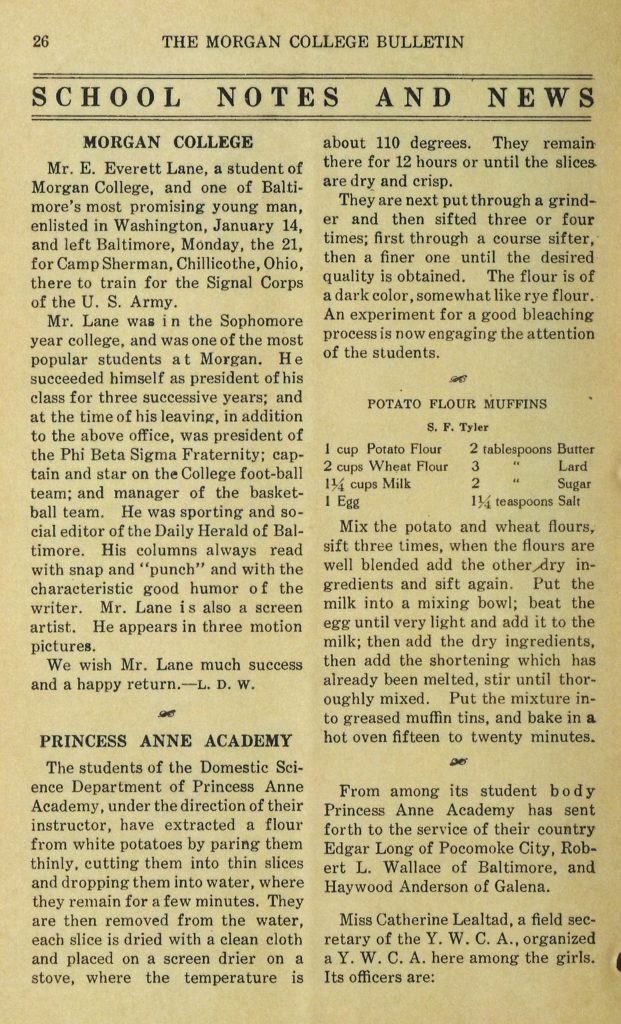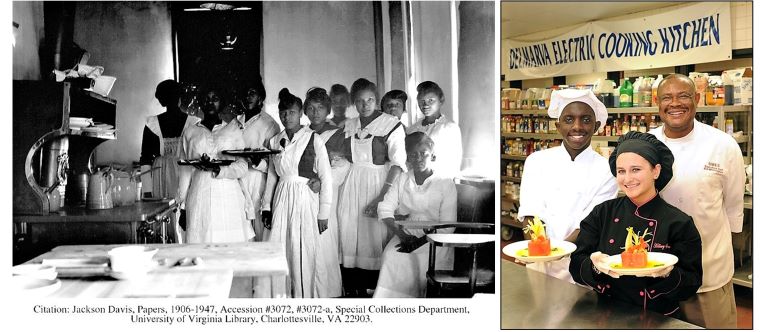
Shortly after Princess Anne Academy opened to provide Blacks a formal education that included instruction in algebra, Latin and rhetoric, Congress enacted the second Morrill Act of 1890 that would transform the rural prep school into a land-grant institution.
Young women whose goal was earning an industrial certificate in “domestic science” could expect to learn “the art of cookery.”
Students would be taught the “classification of foods. Well balanced diet. Exercises in cooking and serving special foods. Foods for infants and invalids. Domestic sanitation as to foods, as to kitchens, as to table service, as to sewers and drainage. Preventable diseases.”
Cooking instruction, in particular, emphasized the importance of classifying vegetables, preserving meat and fruit, broiling, roasting and frying meats, analyzing “the potato and other vegetables” and making bread.
A publication that doubled as a course catalog and newsletter for Morgan College as well as its first branch campus in Princess Anne included a passage underscoring the role of “domestic science” and how bread-making and potato analysis came together in hands-on learning.
On page 26 of the February 1918 edition of the Morgan College bulletin is a recipe describing how students and their instructor extracted “a flour from white potatoes by paring them thinly, cutting them into thin slices and dropping them into water, where they remain for a few minutes.” The recipe notes the flour, before bleaching, was “a dark color, somewhat like rye flour.”
Creative food preparation, designing menus and serving meals in restaurant or banquet settings remained part of the early 21st century curriculum in Princess Anne – and its satellite program at the Universities at Shady Grove near Washington. The University of Maryland Eastern Shore offers an undergraduate degree in hotel and restaurant management*, proof those skills have endured the test of time.

is labeled (from) Princess Anne Academy; it is reproduced with the university’s permission
(*) – In 2014, hotel and restaurant management became hospitality and tourism management.

